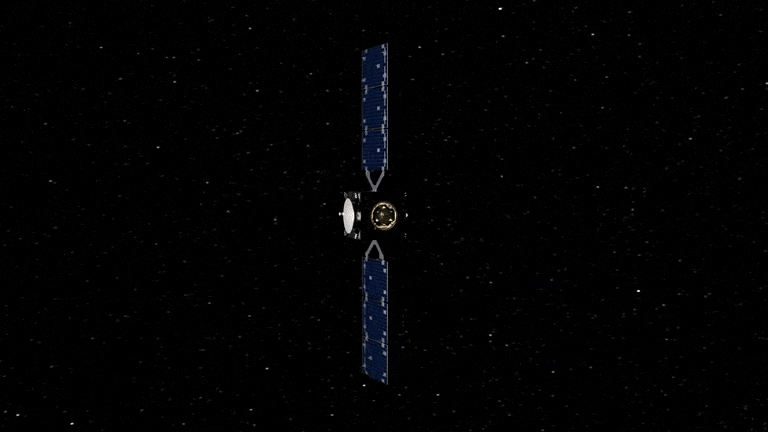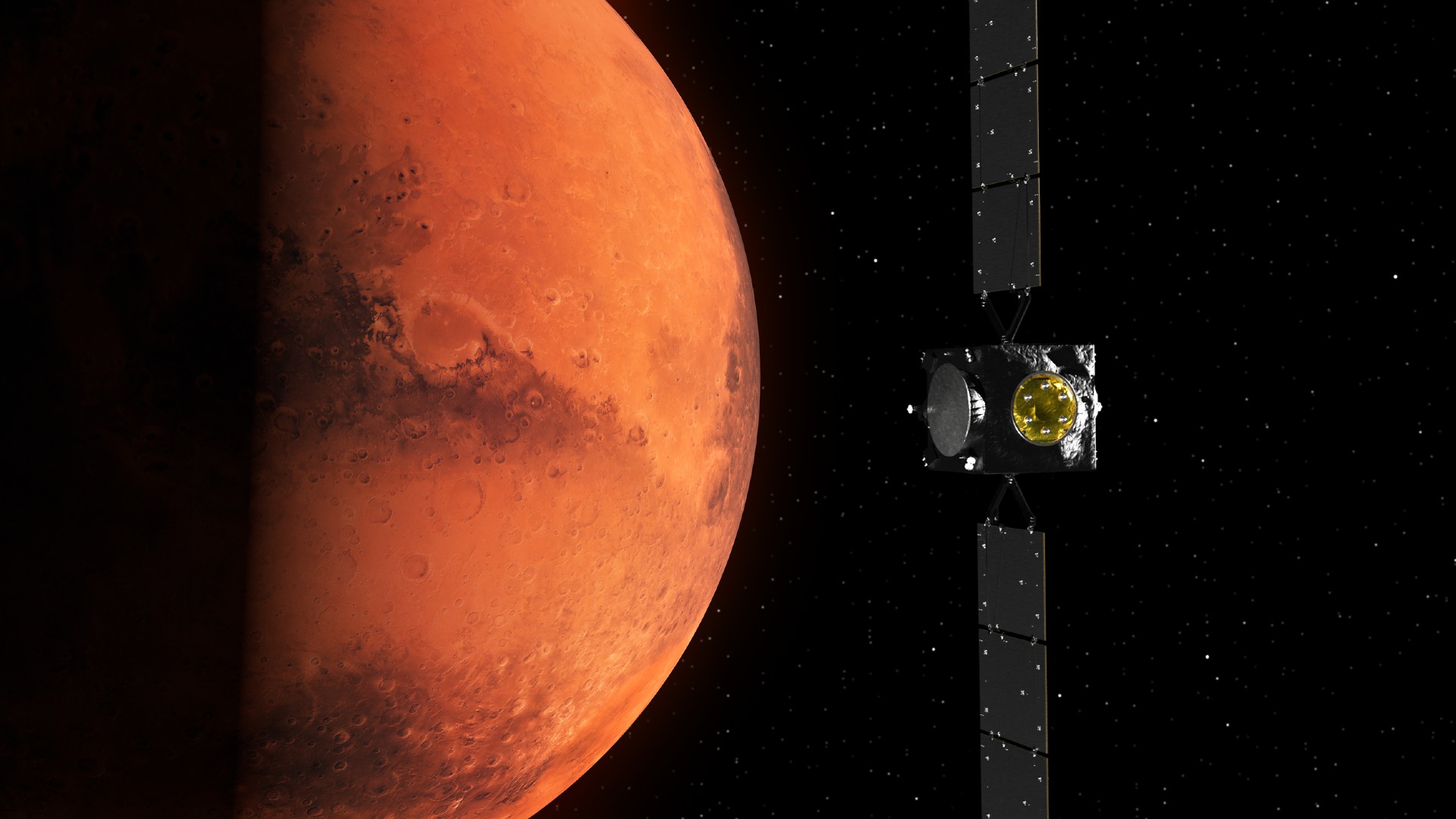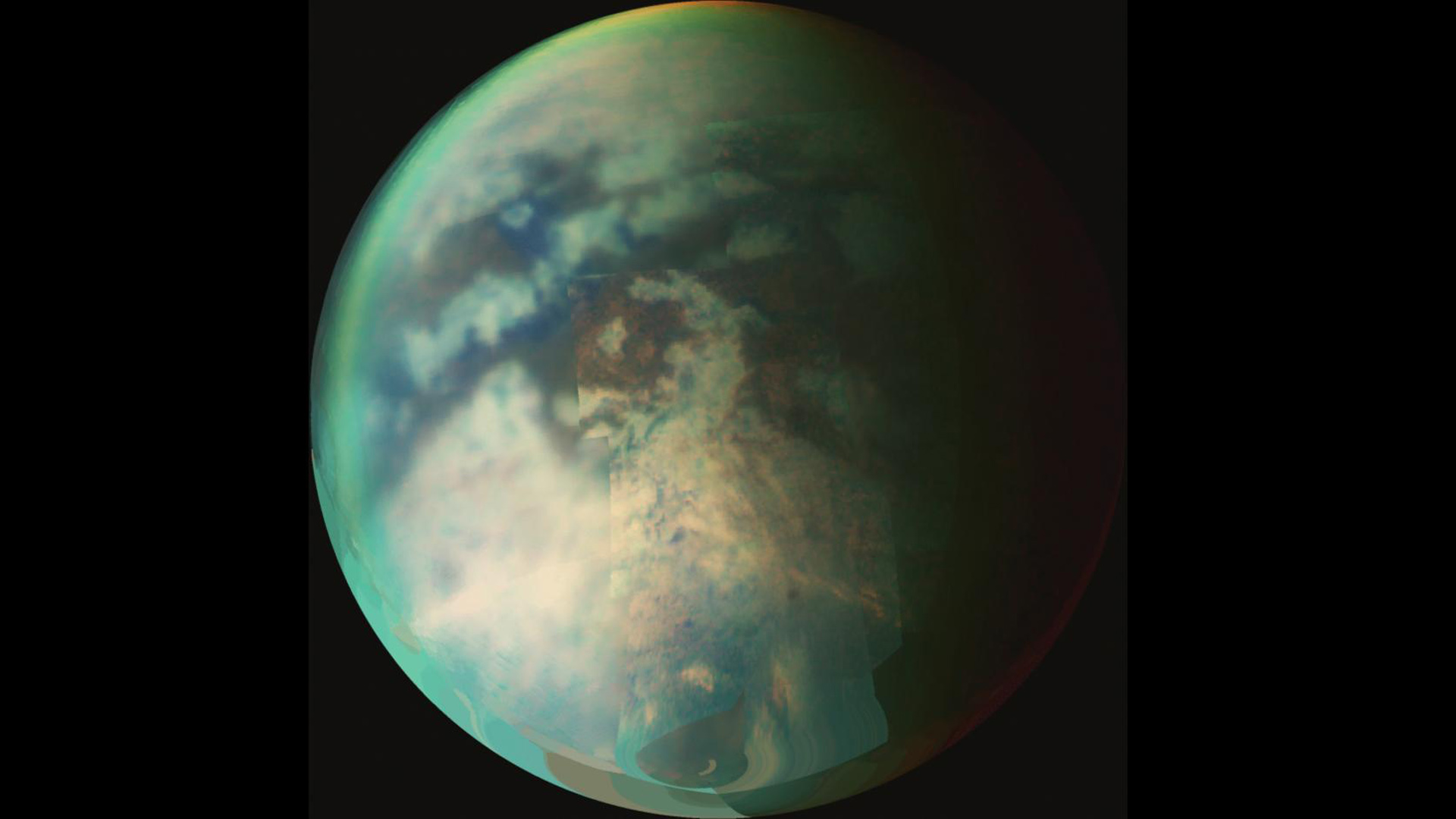Europe's Hera asteroid probe heads for Mars after engine burn
The burn set the spacecraft on course to rendezvous with Mars in March 2025.

The Hera asteroid probe has passed a critical milestone on its journey to study the site of the first asteroid deflection test.
The European Space Agency (ESA) spacecraft fired its three orbital control thrusters for 13 minutes on Nov. 6, following a longer, 100-minute burn on Oct. 23, the agency announced in a statement on Nov. 8.
Together, the maneuvers have sped up Hera by 544 feet per second (166 meters per second), setting the spacecraft on course to rendezvous with Mars in March 2025. It will use the Red Planet for a gravity assist, accelerating Hera towards its destination.
The Hera mission is headed for the Didymos binary asteroid system. NASA's Double Asteroid Redirect Mission (DART) smashed into Didymos' smaller companion, Dimorphos, in September 2022 and Hera is due to make critical follow-up investigations to learn how efficient the asteroid deflection impact really was.
"We are now analyzing Hera's new trajectory following the second burn," Francesco Castellini from ESOC's Flight Dynamics team, said in ESA's statement. "It appears to have gone very well. We will execute a much smaller correction maneuver of a few tens of centimeters on Nov. 21 to fine-tune the trajectory for the upcoming Mars flyby."
The flyby will also be an opportune moment for some bonus science. Hera's trajectory will see it make a flyby of Deimos and will train its science payloads on the mysterious Martian moon.
Hera launched on Oct. 7 on a SpaceX Falcon 9 rocket from Cape Canaveral Space Force Station. The spacecraft is carrying two cubesats, named Milani and Juventas, and is due to arrive at the Didymos system in late 2026.
Breaking space news, the latest updates on rocket launches, skywatching events and more!
Earlier this week ESA released imagery showing how it Hera is becoming ever more distant from the Earth and moon.

Andrew is a freelance space journalist with a focus on reporting on China's rapidly growing space sector. He began writing for Space.com in 2019 and writes for SpaceNews, IEEE Spectrum, National Geographic, Sky & Telescope, New Scientist and others. Andrew first caught the space bug when, as a youngster, he saw Voyager images of other worlds in our solar system for the first time. Away from space, Andrew enjoys trail running in the forests of Finland. You can follow him on Twitter @AJ_FI.

